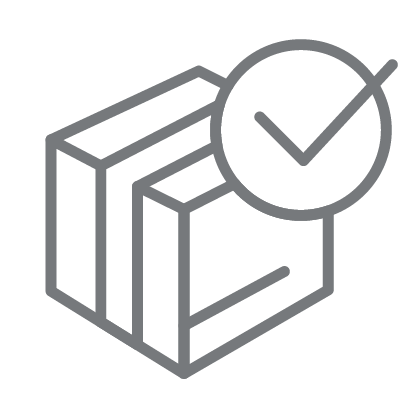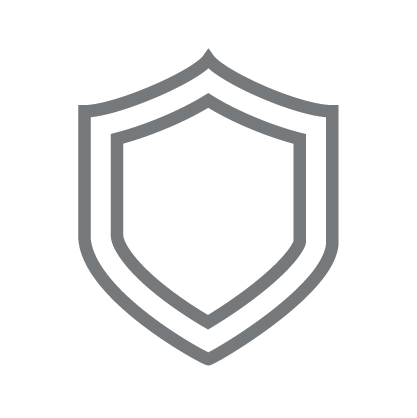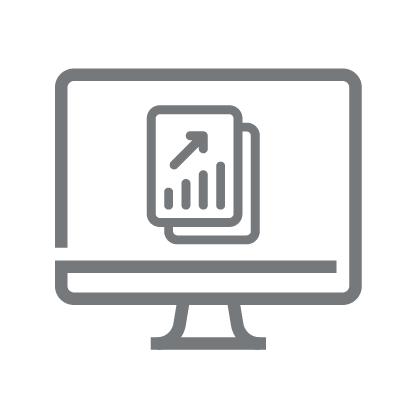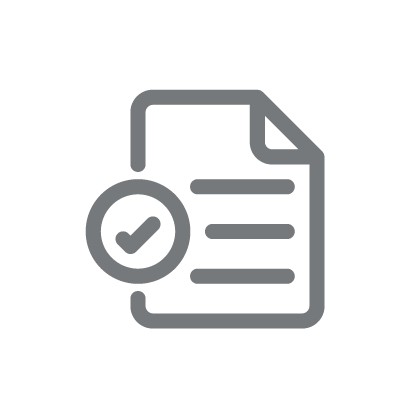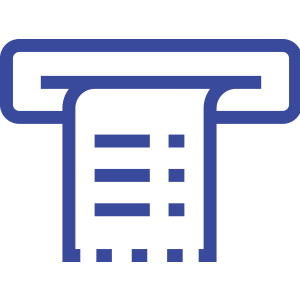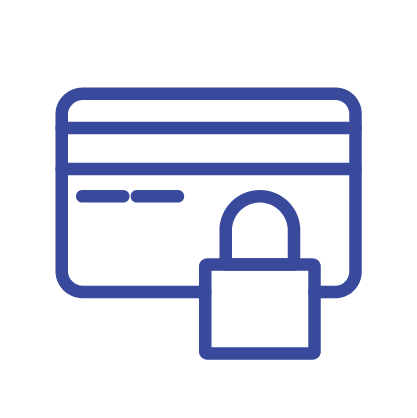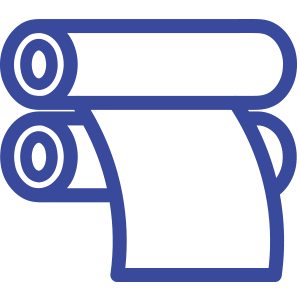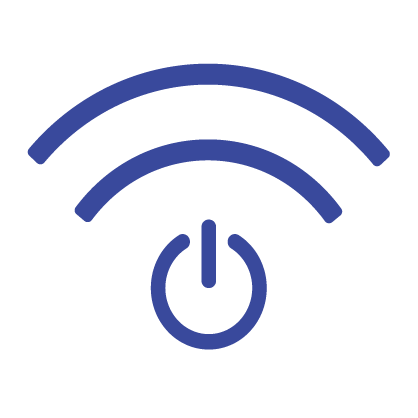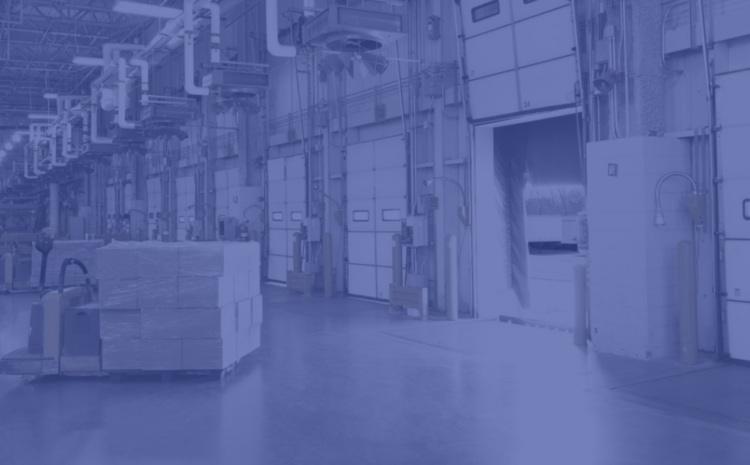
Location Solutions is a comprehensive term referring to technologies used to track the location of a target (an asset or a person) in real or near-real time, usually within a constrained area. Location Solutions technology is paired with location systems to collect data and deliver operational intelligence and context, enabling companies to improve business decisions based on the location data collected.
Location Solutions as a concept has existed for as long as people have wanted to track objects, people and goods—and goes as far back as early radar technology. Location Solutions began evolving when the term RTLS (Real-Time Location System) was created in 1998 at the ID EXPO trade show. It was created to describe and differentiate an emerging technology that not only provided the automatic identification capabilities of active RFID tags, but also added the ability to view the location on a computer screen. It was at this show that the first examples of a commercial radio based RTLS system were shown. Although this capability had been utilized previously by military and government agencies, the technology had been too expensive for commercial purposes. In the early 1990s, the first commercial RTLS were installed in the United States, and were based on transmitting tags. Since then, advances have been made on locating hardware, and improvements have also been made with locating data and software. Industry leaders are now developing predictive analytics, and applying workflow algorithms to help companies improve performance even further.
INTERNET OF THINGS (IOT)
The Internet of Things (IoT) is a network of physical devices embedded with sensors and connectivity enabling objects to connect and exchange data without direct human interaction. A common use case includes smartphone apps that can control thermostats in a home. The ability to easily track location using sensors has become an essential data point of many IoT devices. Location data can be used to manage assets in any number of organizations by connecting to a central IoT platform, allowing for new levels of visibility, manageability, and smarter decision making. Within the context of IoT, and growing interconnectivity, adding RTLS creates a new dimension of data that was not previously available.
CORE CONCEPTS
End users will find that there is no “one size fits all” setup for Location Solutions. Some users may require highly accurate real time tracking of an asset in a large warehouse, for instance, while others may only need to know the general location of an asset—such as which aisle a product is located in a big box retail store. Locating in real time may be important depending on the value of the asset, or what physical stage in the process that an object is in. Some applications only require the user to know the last checkpoint that an object has passed. In many cases, multiple technologies are needed to achieve the process or workflow goals.
There are different technologies available to automatically determine location. The type of technology you select generally is dependent on two main factors:
- Location accuracy: Some technologies can track items down to a portal or zone. This is helpful for items where you need to track simple context, such as arrival or departure of a pallet into a warehouse. Other technologies can track an item’s location with great accuracy, down to a meter or even less. This is useful for situations where precise location is needed.
- Update rates: Not all solutions require real-time information. For example, if a pallet was scanned as it passed through a doorway and is sitting on a rack in a warehouse, continuous updating of location isn’t necessary. However, other solutions might provide location updates on an hourly basis, or more real-time, such as within minutes, seconds, or less, such as a solution that requires constant updates as it tracks the location of a vehicle as it moves through a facility.
Location dimensions to consider
- Range: What is the range of items you are tracking – are they global, in a facility, in a room?
- Accuracy: Subject to interference, time/angle/signal
- Precision: How precisely you need to locate an item: for example, 7m vs 25cm
- Determinacy: How often do you need a location update? (every second, every 5 minutes, or every time someone checks)
- Infrastructure: Existing (Wi-Fi), external (cellular/satellite), simple vs. complex
- Deployment: Traditional cabling, receivers and antennas vs. tags and an application
- Battery life: Recharge daily, replace batteries annually, replace tags every 5-10 years
- Interoperability: At tags, reader/receiver, at locate engine
- Cost: Cost of tags, infrastructure, deployment and maintenance
Locate approaches
There are different ways technology generates location information:
- Calculation: Includes trilateration based on time-difference of arrival (TDOA), angle of arrival, signal strengths. Typically achieved by surrounding area where objects need to be located with infrastructure.
- Presence: Using portals and beacons to track entry and exit, locating based nearest beacon or extrapolating between two beacons.
- Crowd-sourced: Using roaming sniffers, such as a device that employees can wear to help locate a tagged asset.
LOCATION TECHNOLOGIES
RFID – RFID stands for radio frequency identification. It is an automatic identification technology whereby digital data encoded in an RFID tag or “smart label” is captured by a reader using radio waves. Put simply, RFID is similar to barcode technology but uses radio waves to capture data from tags, rather than optically scanning the barcodes on a label. RFID does not require the tag or label to be seen to read its stored data—this is one of the key characteristics of an RFID system. RFID is dynamic, meaning you can update the data on the circuitry, unlike a barcode which is static and cannot be changed.
By connecting the RFID reader to the internet, items with RFID tags or labels can be identified and tracked automatically.
Passive RFID – Has no power source, and uses an antenna and an integrated circuit (IC). The reader sends out radio waves that power the IC when it’s within the zone of the reader. These tags generally are limited to providing basic identification information, but can be small in size, have a long lifespan (20+ years) and are low cost.
Active RFID – Requires the tags to have their own power (usually a battery) and transmitter to broadcast a signal to the RFID reader. They can store more data, have a longer read range and are an excellent choice for high accuracy solutions that require tracking in real time. They are larger due to the need for a battery, and are generally more expensive. The receivers sense one-way transmissions from active tags.
- Ultra Wideband technology (UWB) – These tags can provide a high level of location accuracy over a medium range with a high number of transmission times to enable the exact location in real time. They can provide basic identification, as well as position and other sensor data. Receivers sense one way transmissions from the tags, time stamp them, and forward to a hub. The hub provides power, synchronization and a long-range wired network connection for the receivers. Example use cases include tool control (ensuring the right tool is used in the right position in the operation), tracking human motion and orientation for safety and security, where a high level of location precision is required.
- Bluetooth® low energy technology – Built on the universal Bluetooth standard, these affordable beacons and tags are good for low power applications, and are readable from Bluetooth enabled devices or smartphones. Beacons transmit location data to mobile devices or dedicated gateways, and forward them over Wi-Fi or cellular to a platform (middleware) that turns them into location data. Examples include situations where a system needs to be installed without disruption of business processes (i.e. healthcare), where you are using people’s existing equipment (cellphones, mobile computers) to crowdsource the location of your assets. Another case for Bluetooth low energy beacons is to provide inexpensive, easily installed paypoints that a retailer’s loyalty app, on consumers smartphones, can use to drive customer engagement.
- Wi-Fi – One of the most common ways that Location Solutions is used with Wi-Fi is through smart phones. If you have a smart phone and you walk into a building, the in-building Wi-Fi network can be used to track you. There are features in mobile operating systems to limit this effect and secure your privacy, but in cases where you opt-in (e.g. consumers), or use company devices (e.g. workers) Wi-Fi location sensing can be an inexpensive and easy option. Since businesses already have wi-fi, organizations can take advantage of their existing network for location sensing. Some equipment may need to be added or rearranged to make it more effective, and the accuracy is low, as a result, it may not work well enough to solve most use cases. Good use cases include visitor or employee tracking, where only zone-level accuracy is needed.
- ISO 24730 – Standardized 2.4 GHz wireless protocol that coexists with Wi-Fi/802.11 and it typically performs better than Wi-Fi in industrial environments that have lots of metal, equipment and other barriers that generally block or reflect signals, causing physical interference, and make for a difficult RF environment. They can communicate at distances of up to 1km in free space. This is best used for asset tracking as opposed to other enterprise resources such as people or supplies, and works well with a relatively slow update rate, with assets that need to be track in minutes vs seconds. This technology is ideal for trailer yards or outdoor facilities where accuracy is needed down to the parking space level.
GPS – Global Positioning System, uses a constellation of time-synchronized satellites, each broadcasting a signal down to the earth. A GPS receiver or tag receives multiple signals from multiple satellites and then compares the time difference of arrival to determine its location. Best used in outdoor environments with clear view of the sky. This works best for offsite tracking, large areas like airports, and places where it’s difficult to install infrastructure. Those large sites can take advantage of the self-locating aspects of GPS devices to allow a sparse or minimal infrastructure install, while maintaining good performance.
Location Systems– Enterprise software suite that provides tools for designing, configuring, operating, and troubleshooting RTLS solutions. This system serves as the central repository for all real-time location and communication data captured by the RTLS-tracking infrastructure. Enterprise software can support thousands of sites, users and hundreds of thousands of tracked resources, and also has the ability to locate mobile devices. Provides data to other enterprise applications, partners or customers, and delivers a UI and console complete with reports, events, alerts and actions at the enterprise resource level, along with the ability to manage the system. This software allows you to be agnostic as to the source of the data, it applies effective smoothing algorithms, and it can also plug into multiple applications. This allows the users to have specific applications all tied into one central database.
TECHNOLOGY COMPARISONS:
| PASSIVE RFID | UWB | BLUETOOTH LOW ENERGY | WI-FI | ISO 24730 | GPS |
|---|---|---|---|---|---|
| Inexpensive Tags | High Accuracy | Ease of Deployment | Exists Everywhere | Range and Difficult RF Environments | Outdoor Accuracy |
| 1-8m Range | 200m Range | 10m Range | 30m Range | 400m Range | Worldwide Range |
| Medium Accuracy | Highly Accurate | Low Accuracy | Low Accuracy | Medium Accuracy | Low Accuracy |
| Hard to Deploy | Hard to Deploy | Easy to Deploy | Medium Ease of Deployment | Medium Ease of Deployment | Easy to Deploy |
| Battery Life (n/a) | Long Battery Life | Good Battery Life | Poor Battery Life | Long Battery Life | Poor Battery Life |
| Medium Cost | High Cost | Low Cost | Medium Cost | Medium Cost | High Cost |
LOCATION SOLUTION APPLICATIONS
Location Solutions applications provide the interface to the location data, so you can use the solution in your business. Applications are typically built around the different ways location data can be used, including:
CROSS-INDUSTRY APPLICATIONS:
Asset Management – The tracking, management and utilization of anything tangible that is owned by a company or individual that is held for business use.
Supply Chain Management – The management of interconnected businesses and processes related to the manufacturing, distribution, and sale of products and services. Includes inventory and warehouse management.
Sensing and Monitoring – The integration of sensors (i.e. data loggers) that are used to monitor the physical environment of an object. Common sensors include temperature and humidity.
Maintenance Repair and Overhaul (MRO) – MRO is defined as all activities – technical and administrative – that are conducted to ensure that an object (tools, equipment, vehicles) is able to perform its required function.
Compliance – Compliance is the act or process of adhering to a demand or regimen specified by a government, industry or customer.
Safety/Security – The management, assurance and compliance of safety and security for an enterprise, its employees, assets, products and processes. Common applications include worker safety, evacuation and emergency mustering.
Workflow Optimization – The process of maximizing efficiency for the workflow of a business. One example is an automotive plant. The goal is to minimize the number of steps to get from point A to B in the manufacturing process, or making sure that when a worker gets to point B, they have XYZ available to do the job correctly.
VERTICAL MARKETS AND APPLICATIONS:
Manufacturing – Asset Tracking, Maintenance and Repair (MRO), Material Replenishment, Safety/Security, Supply Chain Management, Work in Process.
Logistics – Cross docks, Inventory/Warehouse Management, Safety/Security, Supply Chain Management, Yard Management.
Transportation – Asset utilization, Automated Track and Trace, Loading, Maintenance Turn Times, Packing, Safety (Unescorted Minor) Vehicle tracking.
Retail – Asset Tracking, Inventory, Supply Chain Management, Warehouse Management.
Healthcare – Asset Tracking, Compliance, Patient flow, Safety, Workflow optimization.
CONSIDERATIONS FOR IMPLEMENTING LOCATION SOLUTIONS
When companies are researching Location Solutions as an option for their intended application, they should also consider factors that may not be easily apparent. Tracking people, for instance, can lead to privacy concerns with the individuals being tracked. You should also think about the costs involved with installing these systems, and whether it is the right option for your business. There may also be state and federal regulations, or union restrictions with tracking people and certain goods.
A complete location solution contains many parts, from the hardware needed for tracking, to the software, services, and expertise required to create and implement the right solution to meet your needs and provide a fast return on investment. Some vendors specialize in one area, or focus on a particular type of hardware and technology, instead of providing a complete solution that integrates with your existing applications. Partnering with companies that offer end-to-end solutions and have the ability to leverage multiple technologies helps ensure your solution can scale as your needs change over time.
BENEFITS OF LOCATION SOLUTIONS
Knowing where things are provides critical business context. Companies spend a fortune in time, energy, and money tracking resources, and automating this process frees up capacity to focus on their business. Having a system that automatically tracks resources for you, and provides insight into the state of the business, frees you up to focus on business decisions and improvements. If you’re spending less time collecting data, you can spend more time reducing capital expenditures, increasing revenues and improving workflows.
With nearly 20 years of innovation in connected edge technologies, Zebra is the leading provider for Location Solutions that impact your business processes. We provide expertise in building complete, end-to-end solutions, from design and implementation of software and hardware, to the delivery of Professional Services needed to support these solutions in your organization. Zebra’s global reach includes a number of Fortune 500 companies that rely on us for real time location systems and visibility solutions to deliver a competitive edge. Find out what Zebra can do for you.
GLOSSARY OF TERMS
AIT: Auto Identification Technology (AutoID)
Antenna: Amplifies a signal so it can be detected by the receiver
API: Application Programming Interface
BLE: Bluetooth Low Energy
BOM: Bill of Material
EAI: Enterprise Asset Intelligence
IOT: Internet of Things
ISO: International Organization for Standardization
pRFID: Passive RFID
RF: Radio Frequency
RFID: Radio Frequency Identification
RTLS: Real Time Locating System
Sensor: A sensor takes a signal and turns it into data (active ISO or UWB receiver)
SLA: Service Level Agreement
SOW: Statement of Work
SRD: Solution Requirement Document
UAT: User Acceptance Testing
UWB: Ultra-Wide Band
WIP: Work in Process

